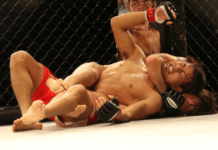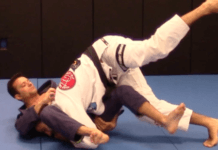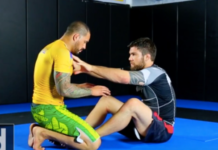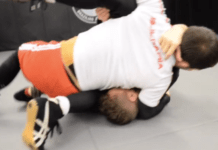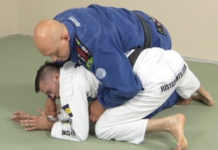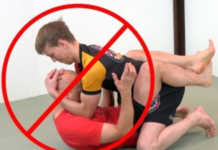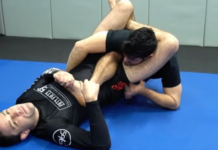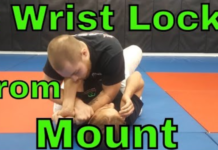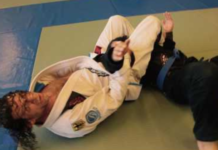There are man different techniques that can help your game in BJJ. Although the main emphasis in this sport is placed on the ground-techniques – there is still a lot to be said about the stand-up techniques. The main reason for this is that the BJJ competition matches start with the competitors standing up. Then they fight for a better position on the ground. There is one technique that many people tend to use in BJJ in order to get the game to the ground. It’s the guard-pull. Pulling the guard means that you will find a way to pull your opponent in your closed guard on the ground.
This technique is not without its opponents, though. There are many people that feel that this is a technique for “cowards” that are on a mission to make the match boring – if it gets them the win in the end. However, this is definitely not necessarily the case. There are many very exciting matches in BJJ competitive history where the guard pull was utilized. So, we feel that you shouldn’t hate on this technique just because it not “as fun and exciting” as doing double leg takedowns and directly going for the kill.
How to efficiently Pull Guard in BJJ
The name of this move clearly sums the meaning up. You will need to find a way to pull your opponent to the ground with you and retain him in your guard. So far so good. But how does one actually go about doing this? There is one main technique for doing this move – and it can then branch out to different “kill” moves that can help you end the match right there and then.
So, the first thing that you need to do is face your opponent and put your grips in place. You need to grab his collar with one hand and his cuff with the other. Then you will need to place your leg at the hip of your opponent while simultaneously pulling him towards you in a circling motion. If you do this properly – then you will secure the guard pool and your opponent will fall down to the ground with you. All you need to do now is close your legs behind your opponent’s back. And you have successfully pulled guard – you can now try and go for the kill moves or the sweeps.
Guard pull submissions
There are a few very effective ways in which you can pull guard on your opponent and end the match with a submission soon after. The first thing that you can go for is an armbar. You need to fall to the ground and use the momentum to spin your body around on the other side. This will give you the opportunity to place your legs over your opponent’s head – his arm between your legs. It’s an armbar.
You can also do a triangle from the guard pull. In order to do this, you will need to sit down on the ground while pulling the opponent with you – only now you will need to use your foot in order to block your opponent’s arm at the bicep muscle – much like in the case for the spider guard. Your opponent won’t be able to use his arm and he will be trapped. All you need to do now is transfer your leg from blocking the biceps to over your opponent’s neck. Then complete the triangle with your other leg.
You can try and do an omoplata from the guard pull. Just sit down on the ground while pulling your opponent – like you usually do. But don’t stop moving your body there. If you keep rotating, then you will get perpendicular towards your opponent. You can then place your leg over your opponent’s shoulder and complete the omoplata.
If you want to see a visual demonstration of all of these submissions, then you should check out the video below.
The Utility of the Guard Pull in BJJ
The good thing about this move is that you can use it with a lot less risk in order to get into a relatively good position – the bottom guard position is where some BJJ practitioners can unleash hell on their opponents. It’s a lot safer than shooting for a single or double-leg takedown and risking guillotines and sprawls and other counters that will bring you into a worse position – or even worse, that will make you submit. As effective as it is – it’s not 100% full proof. Moreover, you will need to drill this technique for a long period of time in order to really master it. But the good part is that this is a simple technique and even novice white belts can start implementing it in their BJJ game.

